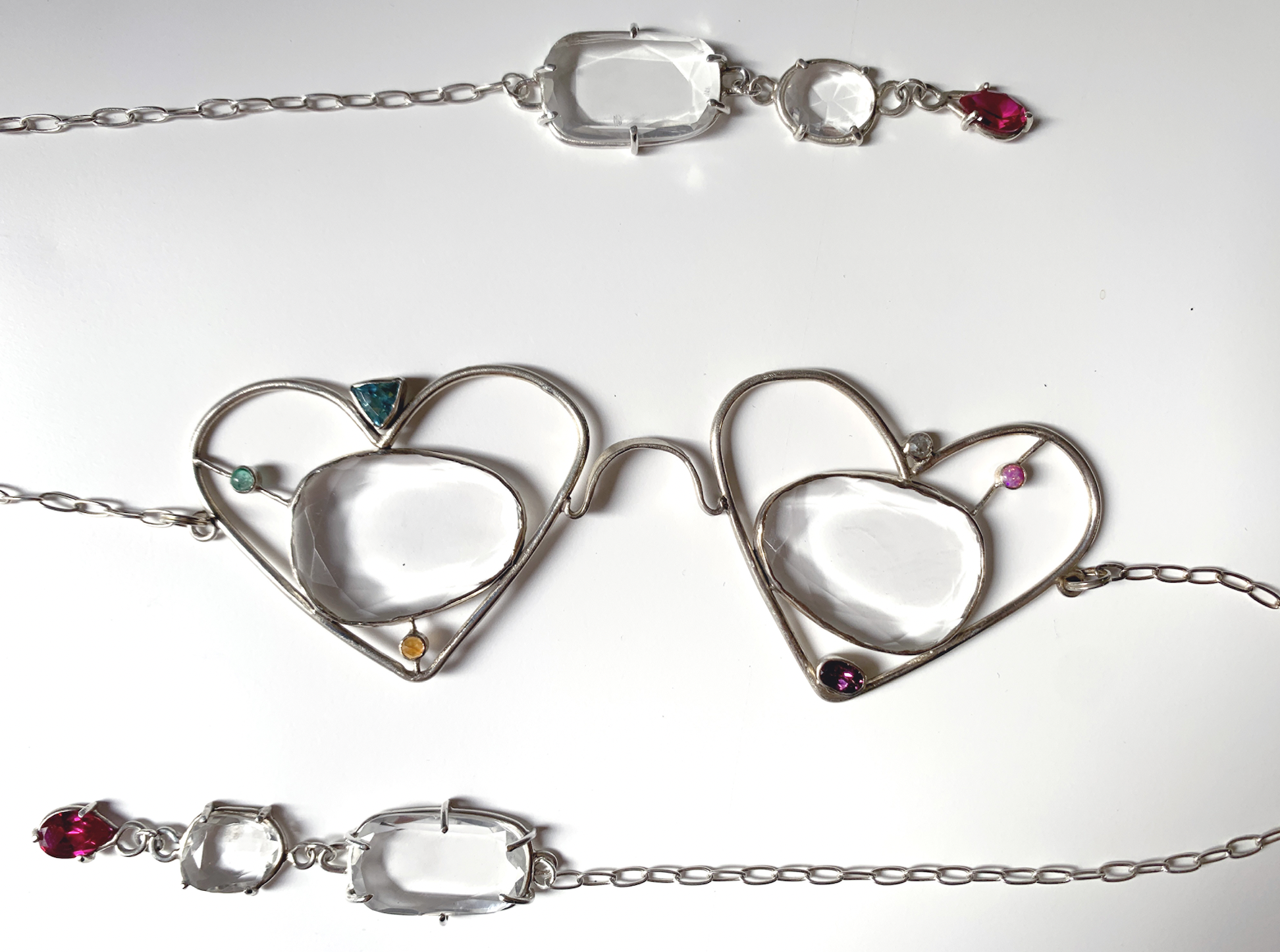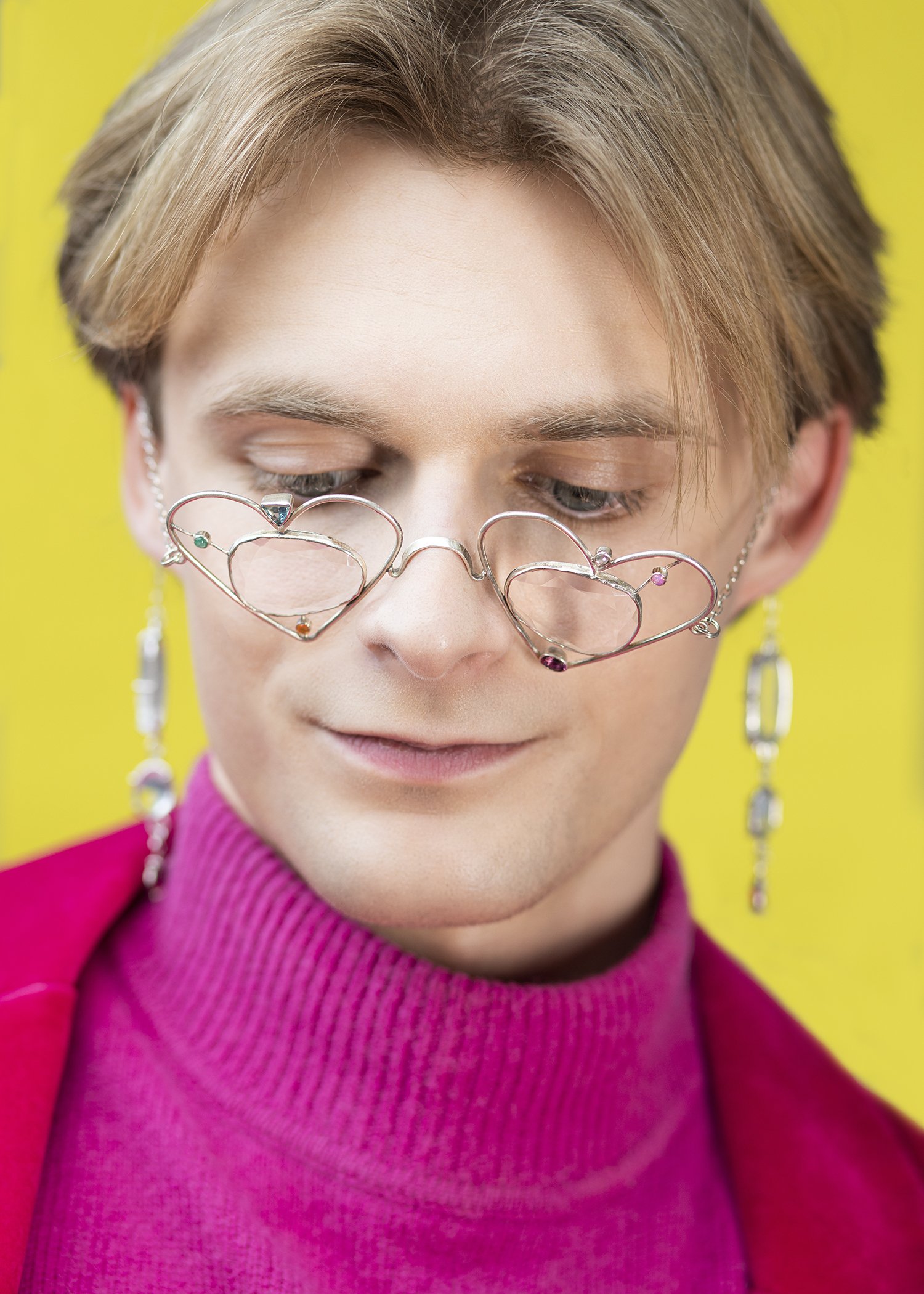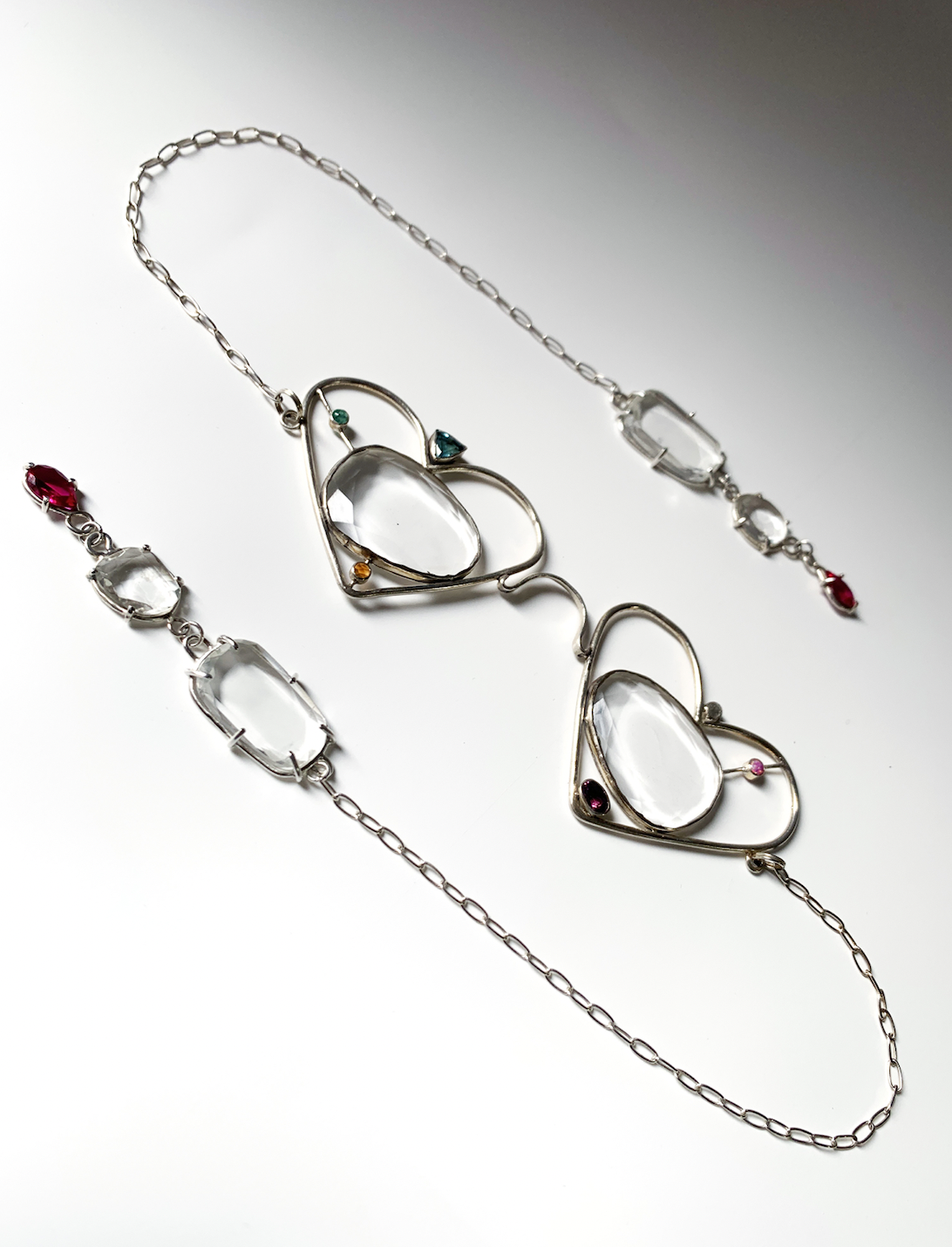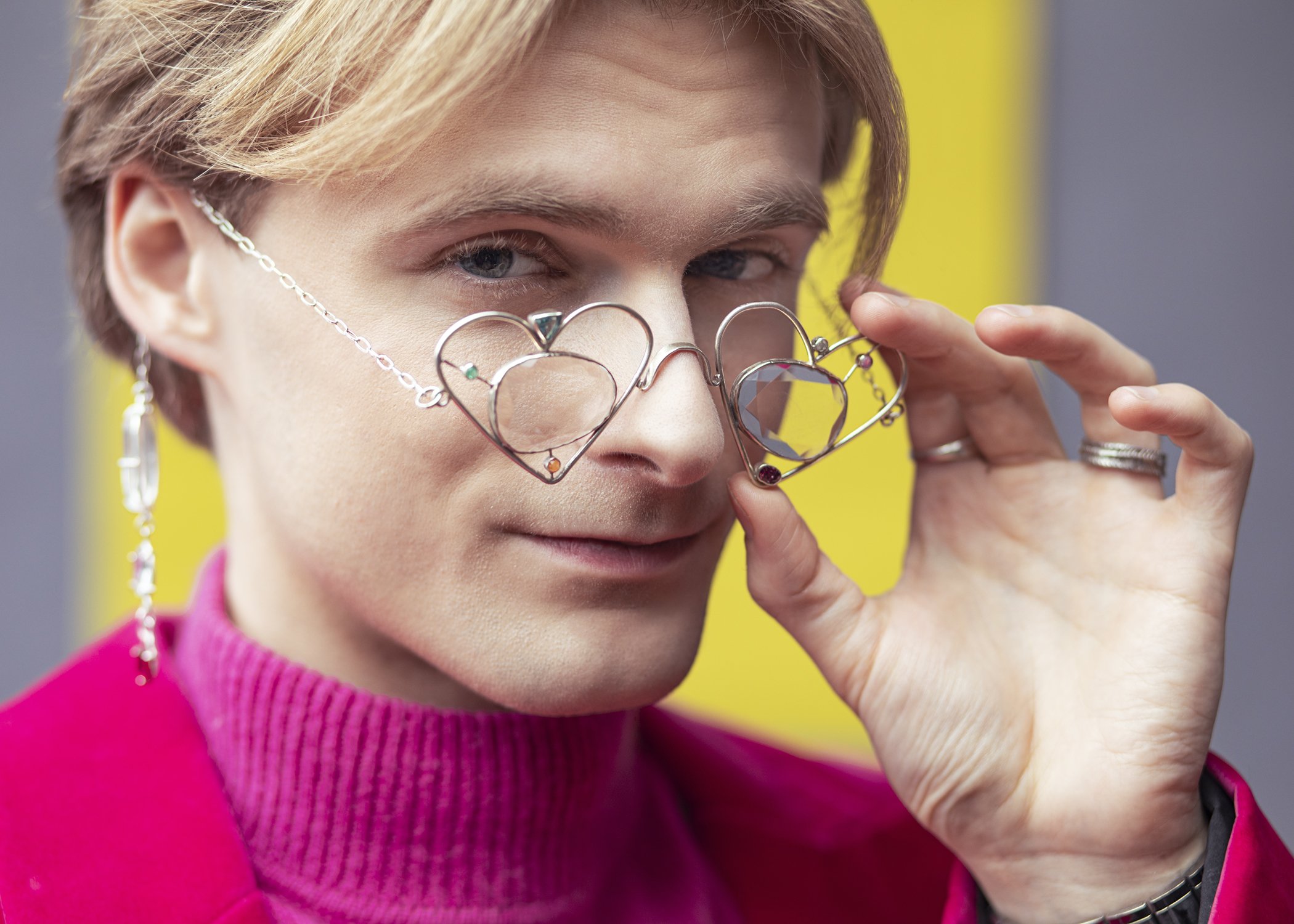Love Glasses
As a ceramic artist, I sometimes find my usual media of clay to be limiting. I learned the basics of metalwork in graduate school under the guidance of Jack Finch, I’m forever grateful for his mentorship. Since grad school, I’ve set up many a small studio corner to continue to practice and hone my skills. When time and budget allowed, I’ve taken classes to continue my education and fuel my passion for the material. The medium is very different, yet oddly similar at times to clay and I’m slowly finding my own voice in metals. Most recently I’ve completed a project titled “Love Glasses” which is currently on display at Ejecta Projects (Carlisle, PA) for their juried exhibition Cannibals of Love. Below is an essay of sorts detailing my inspiration for my latest undertaking in my humble attic metals studio.
Many thanks to Nicole Dube and Keith Tobin for bringing my glasses to life <3
I hope you enjoy!




“Love Glasses”, 2023, Hand fabricated frames, bezels, and assembly. Sterling silver, quartz, pink opal, amethyst, diamond, aquamarine, ruby, emerald, and citrine. Frame 4” x 1.75”, chain 10” (ruby to frame).
A historical instance of combining these concepts can be seen in two pairs of glasses from the Mughal Empire (approximately 17th century): “The Emeralds for Paradise: The Astaneh-Ye Ferdaws” emerald spectacles and “Diamonds for Light: The Halqeh-Ye Nur” diamond spectacles. The Mughals believed emeralds held astrological significance and were also thought to have miraculous healing powers and the ability to ward off evil. The idea of using emeralds to soothe and protect the eyes can be traced back to the first century AD in Pliny the Elder's "Natural History” (Naturalis Historia, an encyclopedia of ancient knowledge) in which he notes “[…] after straining our eyes by looking at another object, we can restore our vision to normal by gazing at an emerald”. Pliny also noted that the emperor Nero (54-68 AD) used emeralds to watch the gory gladiator combats, thus protecting his sight from the bloody scenes.
The concept of "lenses" can also refer to the subjective and sometimes distorted view that one has of a situation. In the phrase "seeing the world through rose-colored glasses", it implies that the person has an overly positive or optimistic perspective, which may not reflect reality. Similarly, "beer goggles" suggest that a person's perception is altered by alcohol, leading to a distorted view of things.
As a child, my go-to accessory was a pair of heart-shaped rainbow sparkle sunglasses. While my family all wore corrective lenses, I was the exception until a few years ago. I wore my "Love Glasses" every day, everywhere. Perhaps this was to fit in in some way, but nevertheless they provided a sense of comfort and confidence to my younger self, surely an early expression of my personal identity and individuality.
Inspired by the Mughal spectacles, I recreated my childhood "Love Glasses". Rather than lenses cleaved from a single 200-carat diamond, I use clear quartz to be my lenses. The sterling silver heart-shaped frames feature several other gemstones, chosen for color to reference the sparkle rainbow frame of my youth. If we attribute the symbolic value of these gemstones, they impart the following: quartz: clarification, pink opal: comforting, amethyst: intuition and creativity, diamond: purity and abundance, aquamarine: healing and truth, ruby: prosperity, emerald: protection, and citrine: self-confidence and intellect.
I created the "Love Glasses" with the intention of encouraging a shift in perspective for the viewer, or wearer. The glasses serve as more than just a functional accessory, but as a tool to spark self-reflection, observation, and interpretation. Through these glasses, I hope to provide a new and unique lens from which to view oneself and the world around.
